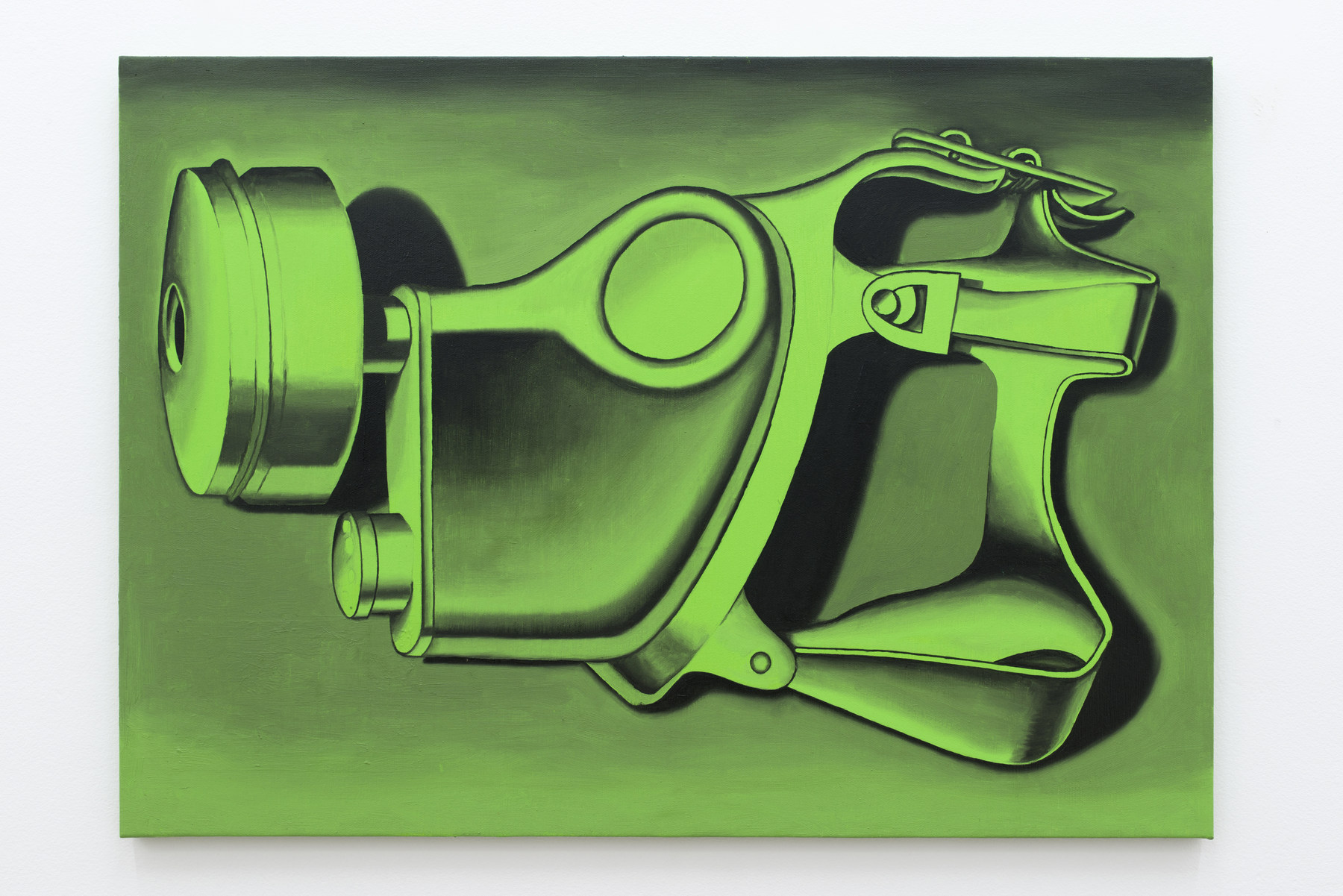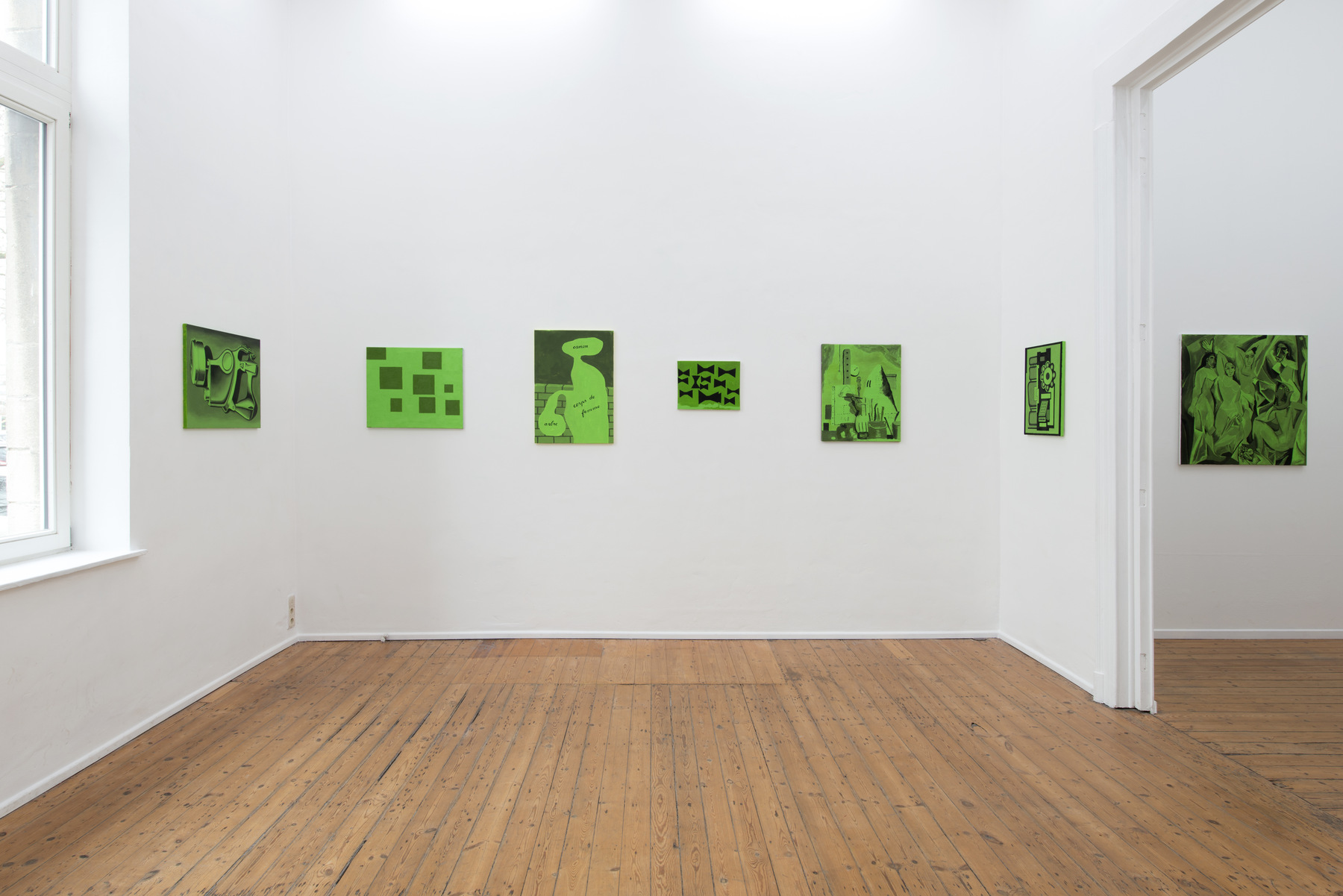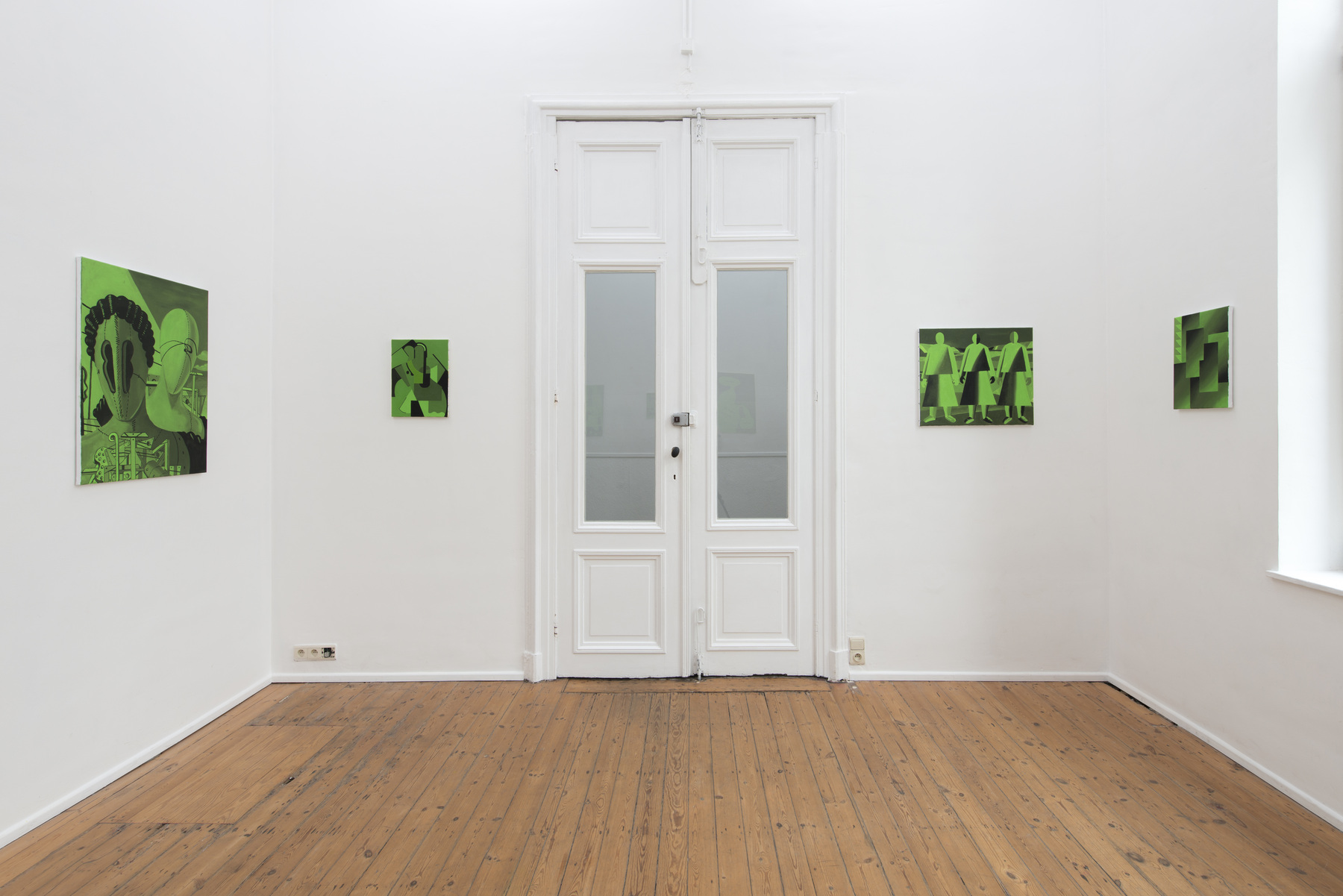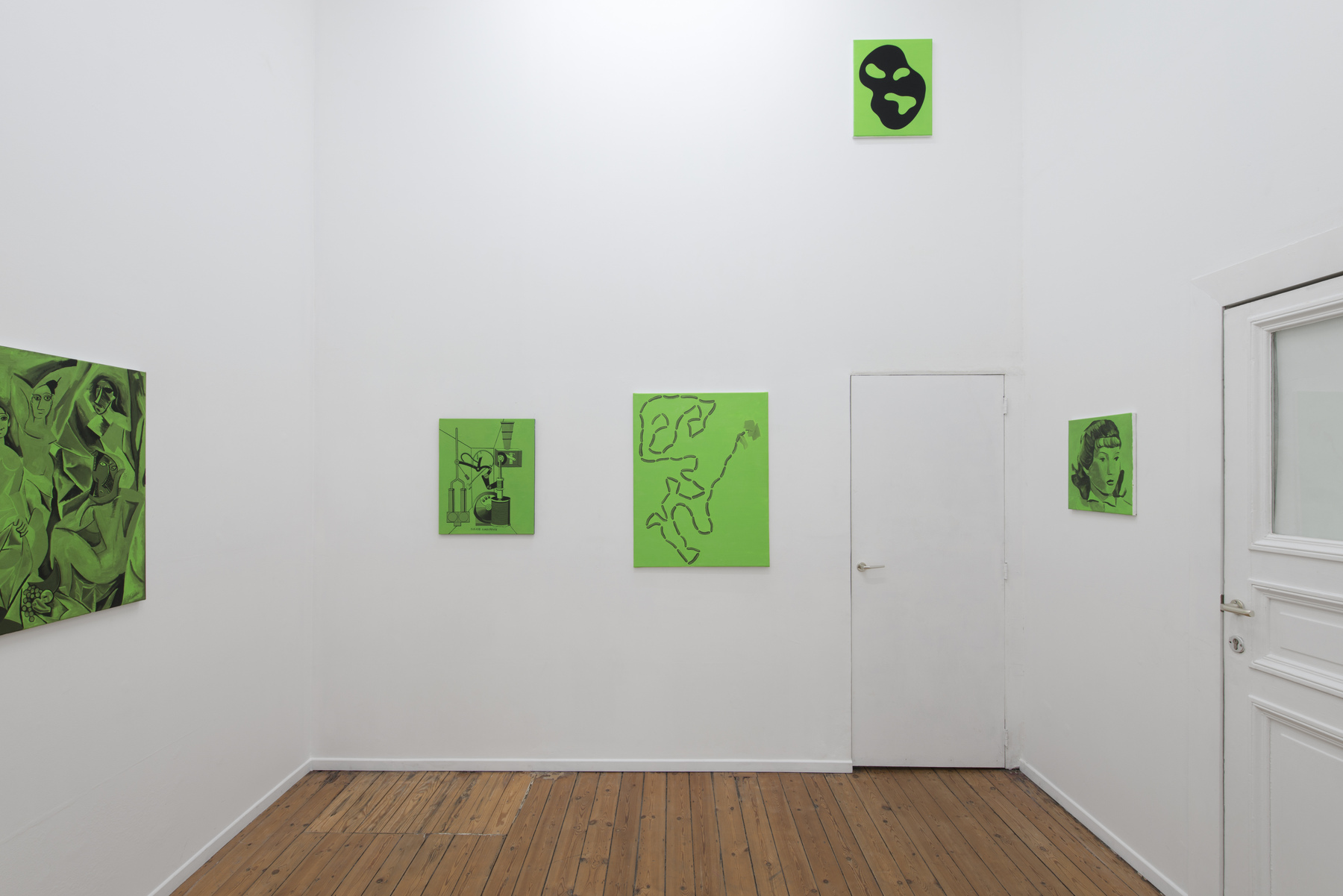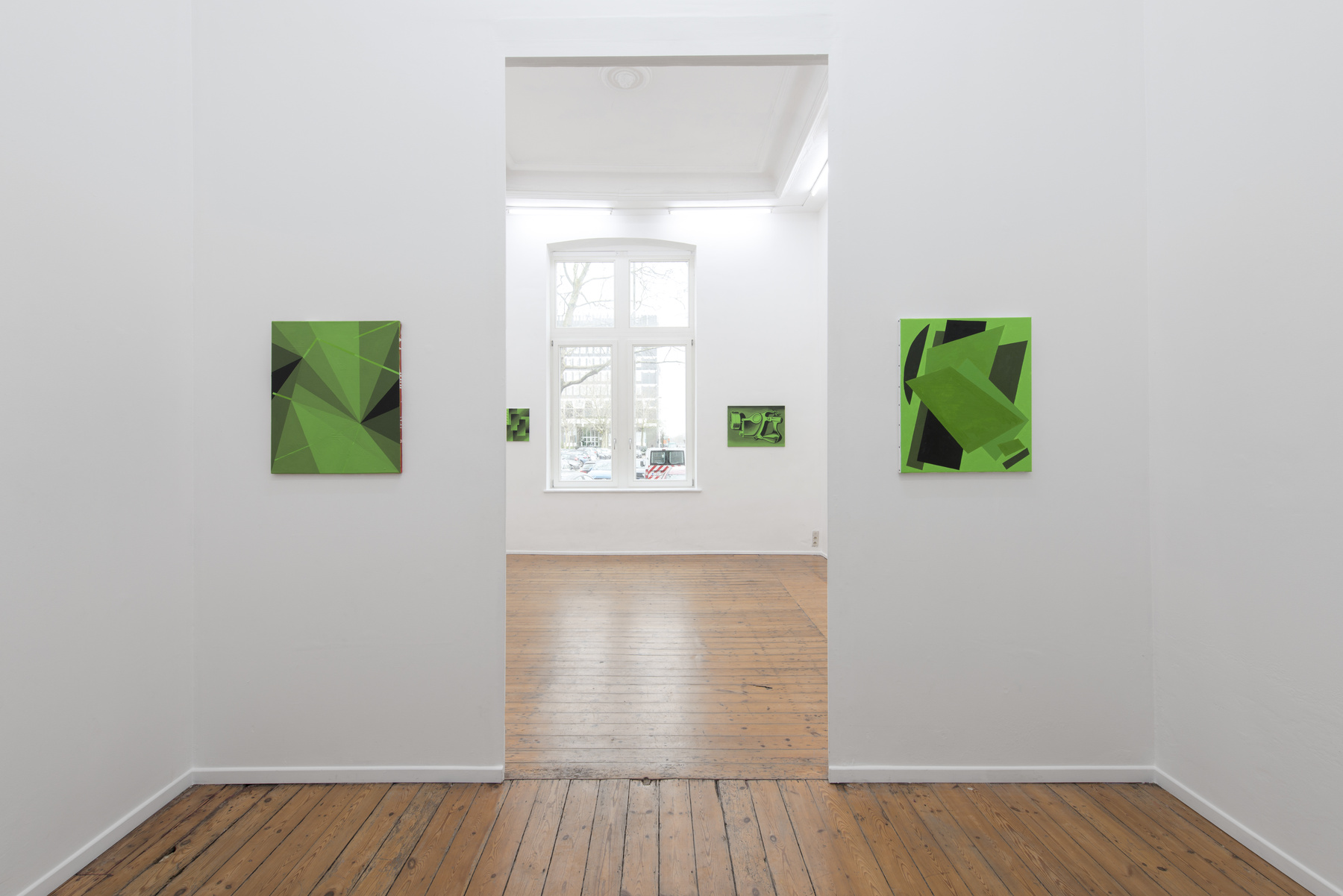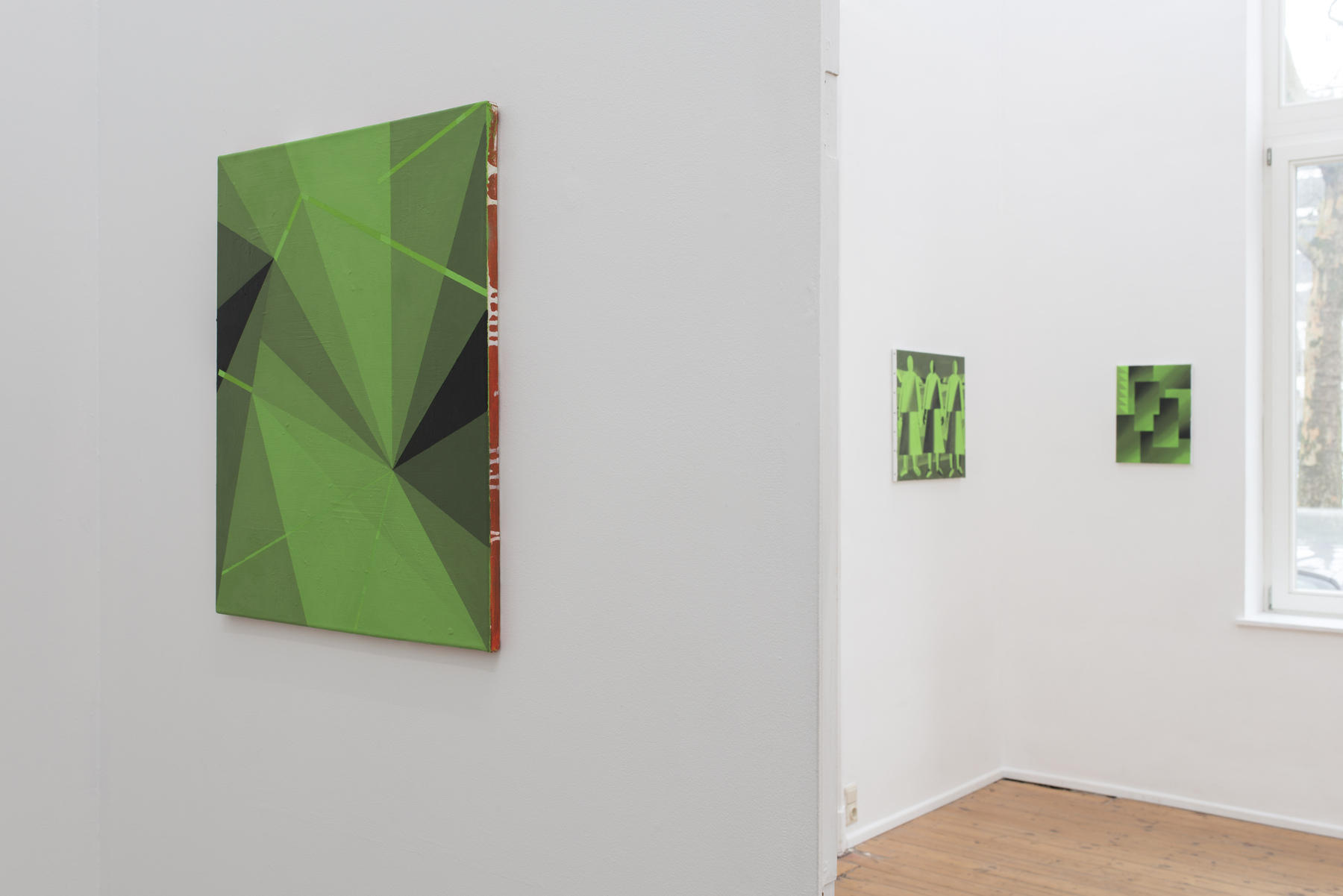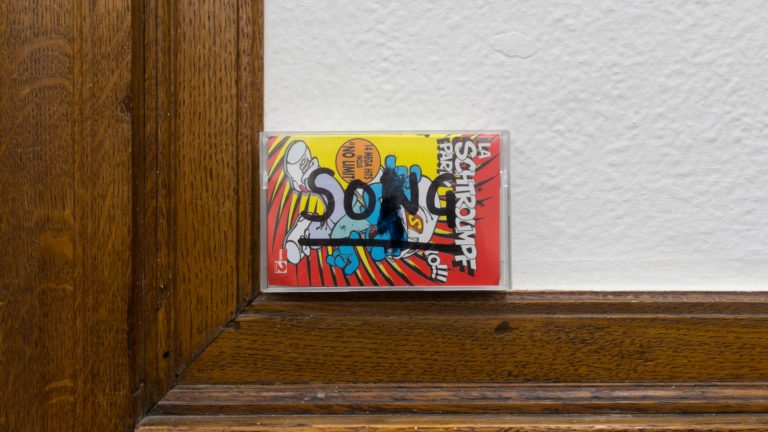Artist: Dieter Durinck
Exhibition title: Bootleg Paintings
Venue: Simon Delobel Gallery, Antwerp, Belgium
Date: March 16 – April 28, 2019
Photography: all images copyright and courtesy of the artist and Simon Delobel Gallery
TOXIC CANON
A conversation with Simon Delobel
(Reproduced from Elle Style Magazine, with the permission of the publishers*)
On Saturday March 16th, the solo exhibition of the Ghent artist Dieter Durinck opens in the brand new Simon Delobel Gallery on Vlaamse kaai 47 in Antwerp. We meet the founder of the gallery in the office of his company.
Elle: Why did you choose to use your own name as the name of your gallery?
Simon Delobel: Dieter Durinck has made this decision. When I started the trampoline gallery in January 2014, I absolutely wanted to avoid using my name. Here in the South district there were almost exclusively galleries that bore the name of their owners: Maes & Mathys, Van de Weghe, Geukens & De Vil, van der Mieden, Tim Van Laere, Micheline Szwajcer … I preferred a meaningless name that sounded playful!
I actually first and foremost loved the sonorous explosion in the middle of the word. Five years later, now that I have embarked on a rather naive crusade against branding, I wanted to use unpronounceable words as the name of the gallery for every new exhibition project. But I really appreciate Dieter’s decision. You cannot imagine how different the reactions are at the start-up of this gallery. Because my own name is used this time, many take it more seriously. As if, in our secularized world, one needs a form of incarnation…
Elle: You seem to give the artist a lot of freedom!
SD: I have known Dieter for years. I realized two exhibition projects with him and artist Elke Van Kerckvoorde : one at the Art Center Hugo Voeten in Herentals and the second one during the Antwerp Art Weekend in 2016. Dieter is the founder and the most important protagonist of Social Harmony in Ghent. I admire not only his generosity towards fellow artists but also his fresh curiosity and his precise knowledge of the history of painting. We are also from the same generation which ensures a lot of mutual understanding.
Elle: Can you give me an example?
SD: We were both about 10 years old when the footage of the first war in Iraq came on television. Images made primarily by the attacker, from fighter jets departing from an aircraft carrier to release their bombs, to green images of night battles. These last images were perhaps the most frightening because they meant that there was never any more peace during a conflict, that technological progress made it possible to fight continuously …
Elle: Are the paintings in the exhibition therefore green?
SD: I suspect this played a role, yes. But in the 1990s, some screens also showed the same green colour. I myself have never played many computer games but Dieter presented me pictures of Atari game consoles with the same green colour. The reference points are therefore diverse but he always starts from a concrete experience of reality… Dieter painted the works in oil paint and, more specifically, in the pigment green cadmium light that used to be carcinogenic. A toxic colour that he mixed with a black pigment. According to Dieter, the works could be defined as retro-futuristic.
Elle: But why did Dieter want to copy works and not paint original works?
SD: (laughs) Are they not original works by Durinck? Homage paintings belong to a tradition that should not be underestimated in the history of Western painting! I think Dieter doesn’t see his bootlegs as copies but as variations of the original paintings. You could say his works are in line with Delacroix’s work based on Rubens, or Picasso’s work vis-à-vis Velasquez… But instead of going back to the old masters, Dieter opted for painters from the 20th century – according to him the most experimental period for painting. The project is a kind of research into that history through non-academic style exercises. Continuing to paint in 2019 is anything but obvious. Dieter also likes to refer to the German painter Albert Oehlen by quoting him: “The best way to be critical about painting is to paint”.
Elle: Can they not be seen as fakes?
SD: Dieter remains very close to the iconography of the paintings. The only thing he does not reproduce is the signature. And the dimensions of the bootlegs often differ greatly from those of the originals. Not to mention the colours.
Elle: The whole has something very surprising.
SD: When I entered the gallery this morning, I was reminded of Greek antique images! We know these as white marble statues while they were originally completely covered with beautiful colours! Have you already been to India? There you can imagine what the Parthenon must have looked like with all that polychromy.
Elle: I thought of an Instagram filter!
SD: I was once looking for a reproduction of the work with the Arnolfini wedding couple by Van Eyck. The search result of Google images was quite impressive: a mosaic of jpg images on which the same elements could always be seen but in all sorts of different shades! It is almost impossible today to make a correct estimate of the colours of a painting based on a screen. And yet the masterpieces of painting are often consumed in this way. I see Dieter’s project as a proposal for a new canon of Western painting. But then a toxic canon.
Elle: I saw on social media that the works have specific titles.
SD: Dieter has chosen to associate some headlines of articles on the Russian news website RT.com with the name of the artist, the title and the year of the original work. In my opinion, strange but also comic confrontations arise that emphasize the imperialist traits of Western art history. What information can you still trust? Can news be something else than fake news?
Elle: Did you follow a system for hanging up the works?
SD: From the very start of the exhibition, it soon became clear that not all works would fit in the relatively small space of the gallery. I asked Dieter if an accrochage like the one of Malevich for his suprematist exhibition could be a possibility. But Dieter thought it was important for the visitor to be able to look carefully at the material of the painting for each work. That is why he opted for an accrochage à la Museum of Fine Arts in Ghent as he puts it himself: the works are exhibited close together, with no resting points, and at eye level. Only for Les demoiselles d’Avignon we have opted for a relatively quiet wall. It is also interesting to see that the bootlegs of the concrete or abstract geometric works such as those by Jozef Albers, Jo Delahaut and Amédée Cortier do not tolerate any figurative paintings nearby… We unfortunately had to hang the three works in this office space!
Elle: What is your favourite bootleg?
SD: When I came from France to Belgium, I was allowed to organize an exhibition about the work of Maurice Carlier for the Felix Art Museum in Drogenbos. A few years later, together with my wife, I bought a photographic work by Leen Voet. She created it when she was studying Felix De Boeck’s archive, in the context of her artist’s book Felix. The work is a photo from a Felix De Boeck album on which he can be seen as an 80-year-old man on a beach at the Belgian coast, with his long white beard and his white body, with the exception of his head and forearms. A beautiful image. Coincidentally, Leen Voet was a teacher of Dieter. Because of those different reasons, I would be inclined to choose the Felix De Boeck bootleg. Do you have a favorite yourself?
Elle: Der Wurstesser, without a doubt. (laughs) Is Dieter planning to make other bootlegs? Can I just order one?
SD: It is almost certain that he will create new bootlegs. But I fear that Dieter will never make one on commission. His selection of works is very personal. Dieter recently told me that he would like to make a whole series of bootlegs of German post-war masters, on a much larger size than until now: from Richter to Oehlen via Kippenberger. He also said that he had made the decision to never realize more than one bootleg per artist.
Elle: Thank you for your time, Mr Delobel. And good luck!
* Do not hesitate to read another interview from Elle Style Magazine in the catalogue of the exhibition “Hors Commerce is also commerce” curated by Hans Theys for Ronny Van de Velde gallery (24.03.2019 – 26.05.2019).

